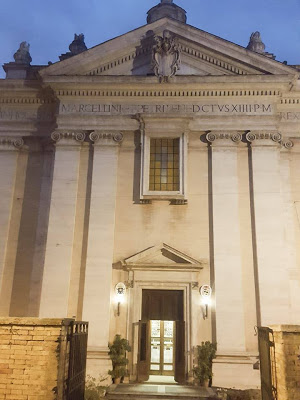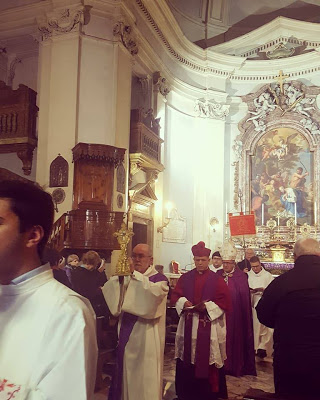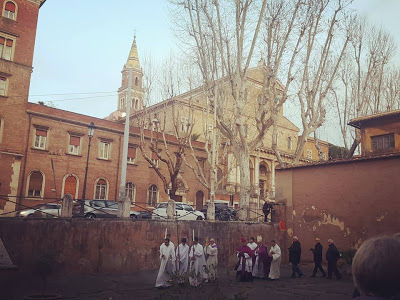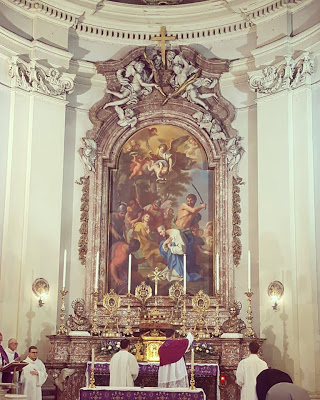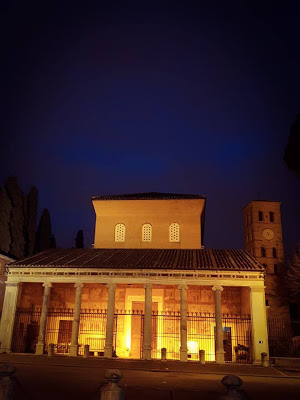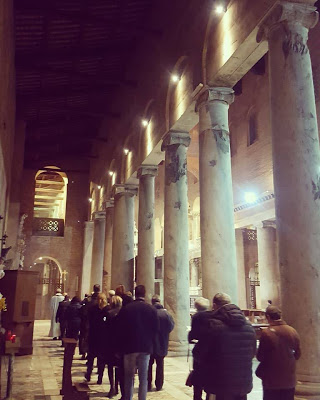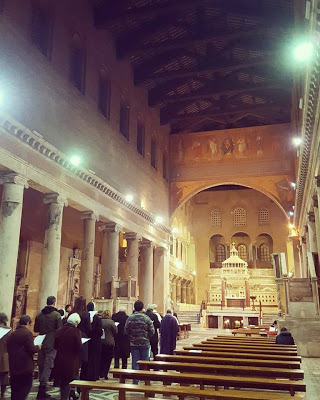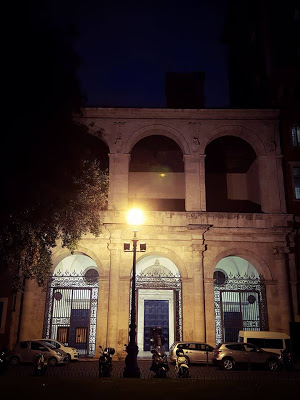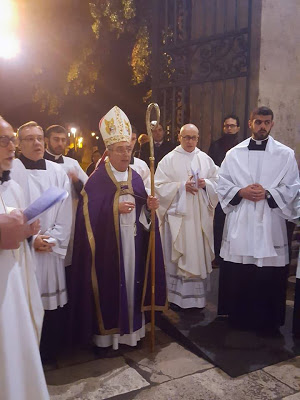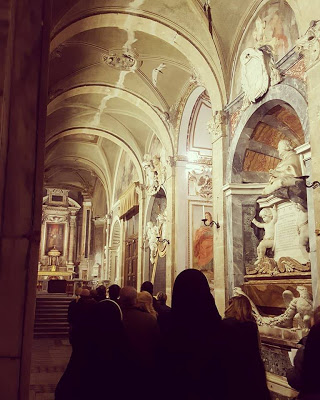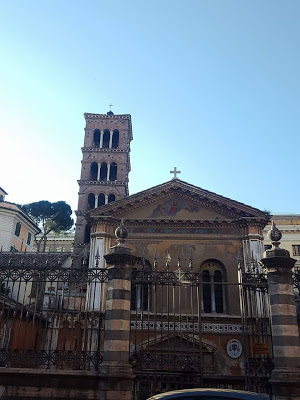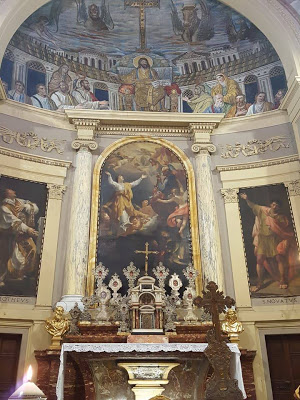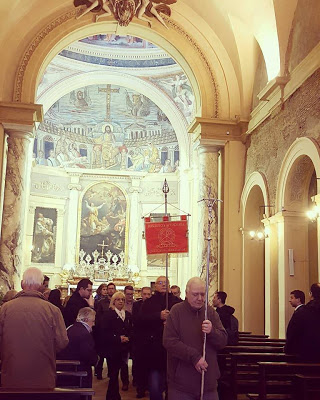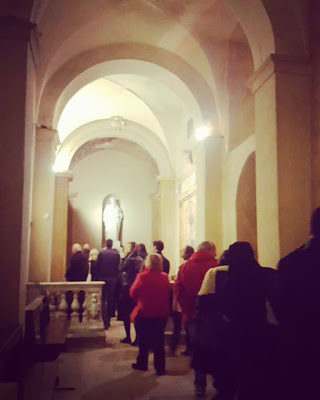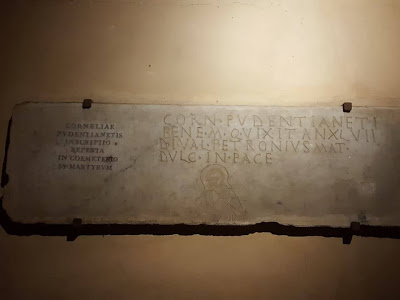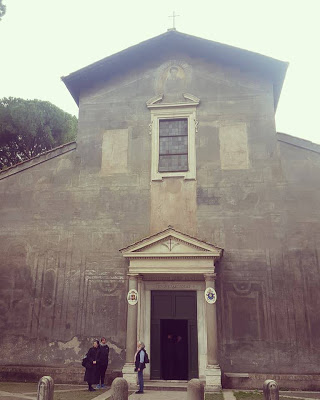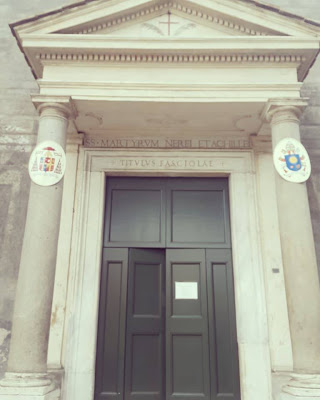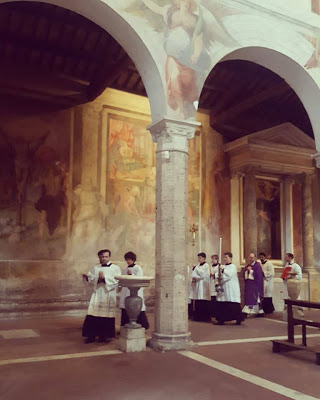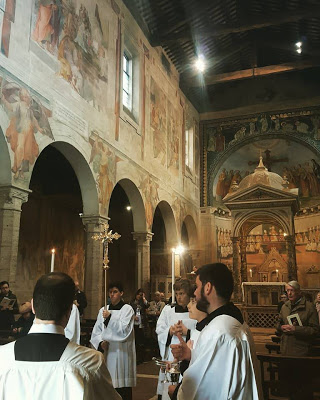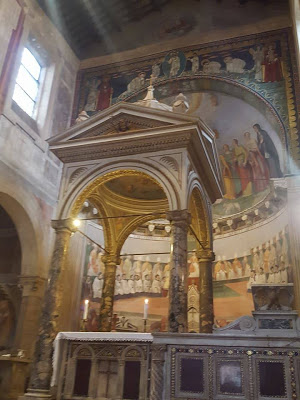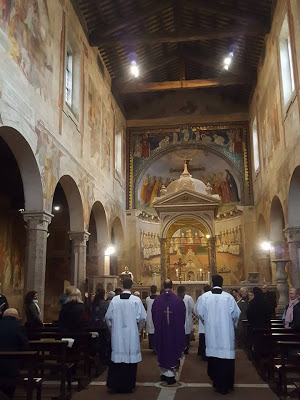

| Online: | |
| Visits: | |
| Stories: |

| Story Views | |
| Now: | |
| Last Hour: | |
| Last 24 Hours: | |
| Total: | |
A Roman Pilgrim at the Station Churches 2017 (Part 4)
St Peter was an exorcist, and St Marcellinus a priest, who were martyred together in the persecution of Diocletian. Their church was originally built by Pope St Gregory III (731-741), on a level much lower than that of the current building; by the mid-18th century, it had fallen into ruins and needed to be completely reconstructed. Even within the last 250 years, however, so many new things have been built around it that it is now also below street level, although much less dramatically so than San Vitale, seen in the previous post in this series.
This is one of Rome’s oldest churches, built over the site of the great martyr’s burial by the Emperor Constantine in the first years of the peace of the Church. Pope St Sixtus III (432-440) built a second church on the site, dedicated to the Virgin Mary, flush with one of the walls of the Constantinian structure; this wall was then taken down by Pelagius II (579-590, the predecessor of St Gregory the Great), transforming the Marian church into the nave of St Lawrence’s. The sanctuary of the latter was then rebuilt at a rather higher level than the nave, with a large crypt beneath it. The dedication of what is now the nave of the church to the Virgin Mary is remembered in the traditional Gospel of the Third Sunday of Lent, which ends with the verses of Luke 11 commonly read on Our Lady’s feasts, and on the Saturday votive Mass of the Virgin. “And it came to pass, as He spoke these things, a certain woman from the crowd, lifting up her voice, said to Him: Blessed is the womb that bore Thee, and the paps that gave Thee suck. But He said: Yea rather, blessed are they who hear the word of God, and keep it.”
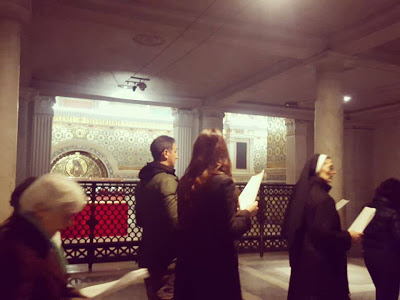 |
| Pilgrims pass through the crypt past the tomb of Bl. Pius IX (draped in red in the background) |
This basilica was originally built in honor of St Mark the Evangelist by the only Pope of the same name, who ruled for 10 months in the year 336. Because St Mark is the Patron of Venice, it has often been given as the cardinalitial title to the Patriarchs of that city; six Popes have been elected while cardinal of this church, four of whom were Patriarch at the time of their election. (Gregory XII, 1406-15, the last Pope to resign before Benedict XVI; Paul II, 1464-71; Clement XIII, 1758-69; and John Paul I, 33 days in 1978.) The church is now surrounded on three sides by the Palazzo Venezia, formerly the embassy of the Venetian Republic to the Papal States.
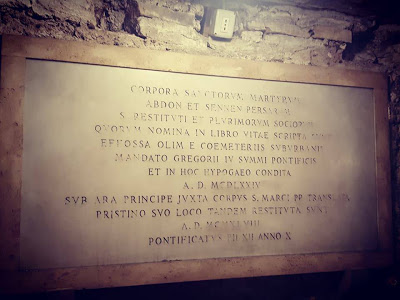 |
| The bodies of a great many martyrs were removed from the catacombs and installed in this church by Pope Gregory IV (827-844), as commemorated by this inscription. |
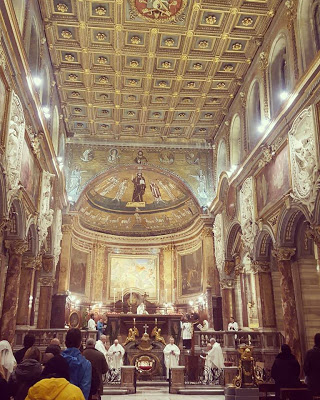 |
| The Mass was that of the transferred solemnity of St Joseph, hence the white vestments. |
Like San Vitale and Ss Peter and Marcellinus, the Basilica of Saint Pudentiana is now sunk below the street level, as new layers of buildings have been built up around it. In the 1920s, the church required such an extensive renovation that an alternative station was appointed for this day at the church of St Agatha. From 1556 to 1565, the Cardinal-Priest of this church was Scipione Rebiba; the vast majority of Latin Rite Catholic bishops (and therefore the priests ordained by them) today derive their Apostolic succession from this man through Pope Benedict XIII (1724-30).
The church of St Sixtus is undergoing one of those classically Roman perennial restorations, as it was when we did this series the first time in 2014. The Lenten Station for this day has been held for the last several years across the street at Ss Nereus and Achilleus, formerly the Station on Holy Monday. (I have explained the church’s other name, “Titulus Fasciolae – the title of the bandage”, in an article on the Stations of Holy Week.)
Source: http://www.newliturgicalmovement.org/2017/03/a-roman-pilgrim-at-station-churches_22.html



